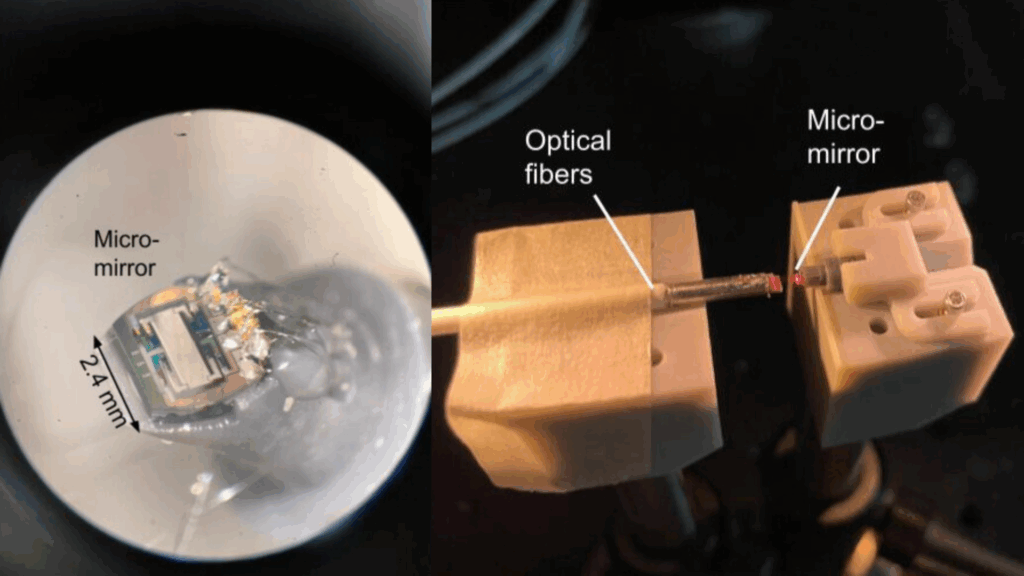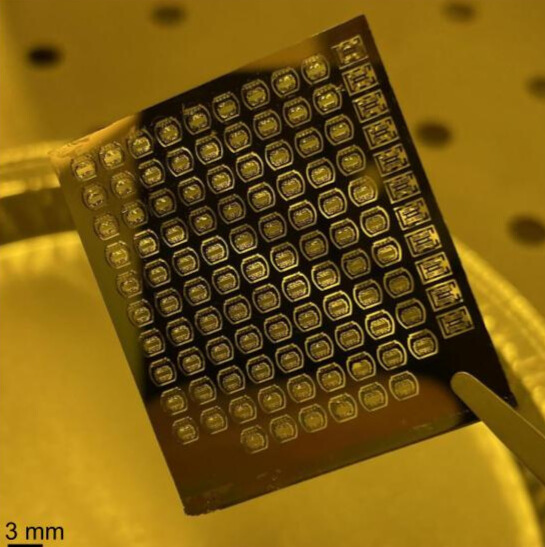The center will focus on the development of microsystem-based optical imaging technologies with ME professors Kenn Oldham and Thomas Wang as principal investigators.

Researchers at the University of Michigan have received a $6 million grant from the National Institutes of Health (NIH) to establish a Center for Microsystems-Based Imaging Systems.
The U-M Center will focus on the development of optical imaging techniques enabled by microsystem technologies, which offer a new and exciting approach to the development of small-scale devices used for medical imaging. These tools make real-time cellular imaging possible with greater detail and speed, making advanced care more accessible to patients.
Kenn Oldham, professor of mechanical engineering at U-M, and Thomas Wang, professor of internal medicine, mechanical engineering, and biomedical engineering, will lead the Center as principal investigators.
This Center is one of 18 supported by NIH’s National Institute of Biomedical Imaging and Bioengineering. They are tasked with developing innovative technologies and methods in their respective fields for clinical and research applications and must be applicable to a variety of medical conditions.
The optical imaging techniques that will be developed at U-M, for example, will likely have impacts on diagnostics and treatment of cancers of the gastrointestinal tract, oral cavity, and throat.
Oldham said the use of these technologies could also enhance the study of neuron activity, which can help researchers improve their understanding of neurological conditions, such as Alzheimer’s disease. Other potential applications can be found in the dental field and in investigating certain heart and lung conditions.
“The (center) will establish our leadership in pioneering novel in vivo imaging technologies that significantly enhance biomedical research, clinical diagnostics, and treatment strategies,” Wang said in a recent U-M Rogel Cancer Center news release.
Thanks to the close partnership between the College of Engineering and the U-M Health System, the Center is uniquely positioned to develop technologies that can easily be applied to a multitude of conditions and treatment approaches. The joint effort allows U-M engineers to receive feedback and make adjustments to designs quickly and effectively, Oldham said.
“Without the clinicians, doctors, and medical researchers telling us what they need to do in order to understand the biology, we wouldn’t necessarily know what to target with the performance of our microsystems,” he explained. “It’s something that’s really not available so directly at most universities.”
Occupying a new space in the A. Alfred Taubman Biomedical Science Research Building, the Center will allow U-M to scale up its facilities and activities related to the testing and verification of imaging systems. Oldham explained it has the potential to elevate U-M to become a focal point for optical imaging.
“We think that there are these really unique opportunities with optical imaging that are not necessarily widely recognized as tools that can be available to medical researchers or medical clinicians,” he said. “The hope is to raise the prominence of these methods as potential tools for studying disease biology and doing disease diagnostics nationwide.”

The Center presents a valuable opportunity for U-M mechanical engineers to elevate their own work while addressing major medical research questions. Oldham said engineers will work on problems related to the optimization of piezoelectric and thermal actuators for micro-scanning mirrors, development of novel acoustic transducers, controls research, and other microsystems and nanosystems-related areas.
“There will be one or more PhD students in mechanical engineering engaged in the project, who will be working with the Lurie Nanofabrication Facility in order to do micro-device fabrication,” Oldham said. “And I expect to have some undergraduate researchers working with us, as well.”
Bringing the Center to U-M has been a long-term collaborative effort, Oldham explained. More than two years ago, he and Wang began discussing their research efforts with the NIH branch and external researchers to identify potential projects and establish support for a center in Ann Arbor.
Now that the Center has been established, Oldham’s work as principal investigator will focus on device-level collaborations and further development of miniature micro-mirrors, optical sensors, and acoustic sensors.
He will also be responsible for optimizing these technologies for instruments built in the other center’s core areas and working with external partners on system development to support their research. Oldham explained that the collaborative nature of his position as principal investigator places a strong emphasis on ensuring these technologies are both user-friendly and reliable.
“We want to make these technologies easy and reliable enough to use so that other people, who don’t have the same resources, microfabrication facilities, or testing facilities, can benefit from using them for their own work,” he said.
As the center takes root in Ann Arbor, the U-M researchers are excited about the potential impacts of their work in the fields of engineering, clinical medicine, and data science.
“The big picture, really exciting thing about this is that, if we’re successful, we will be moving technologies that were developed at the University of Michigan and in our mechanical engineering department into the hands of researchers all around the country,” Oldham said. “That’s a really great thing to have the opportunity to do.”
Additional project leaders are Xiaogan Liang, Ph.D., professor of mechanical engineering; Guan Xu, Ph.D., assistant professor of ophthalmology and biomedical engineering; Dawen Cai, Ph.D., associate professor of cell and developmental biology; and Kayvan Najarian, Ph.D., professor of computational medicine and bioinformatics. Wang, Rehemtulla and Xu are members of the Rogel Cancer Center.

